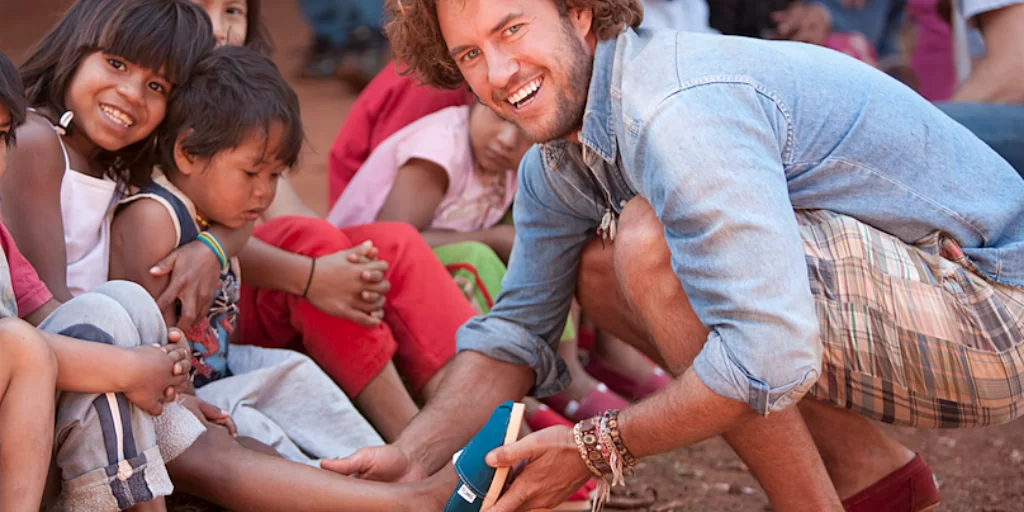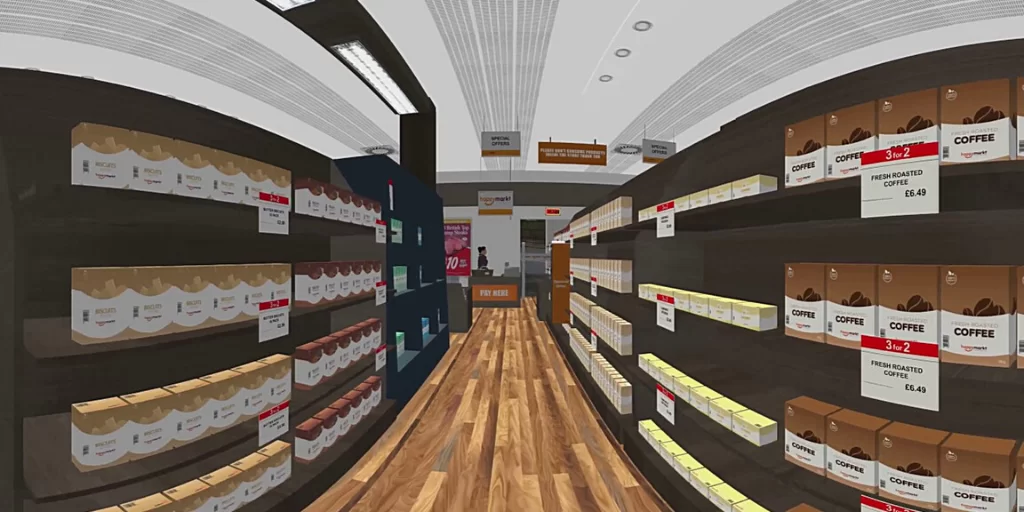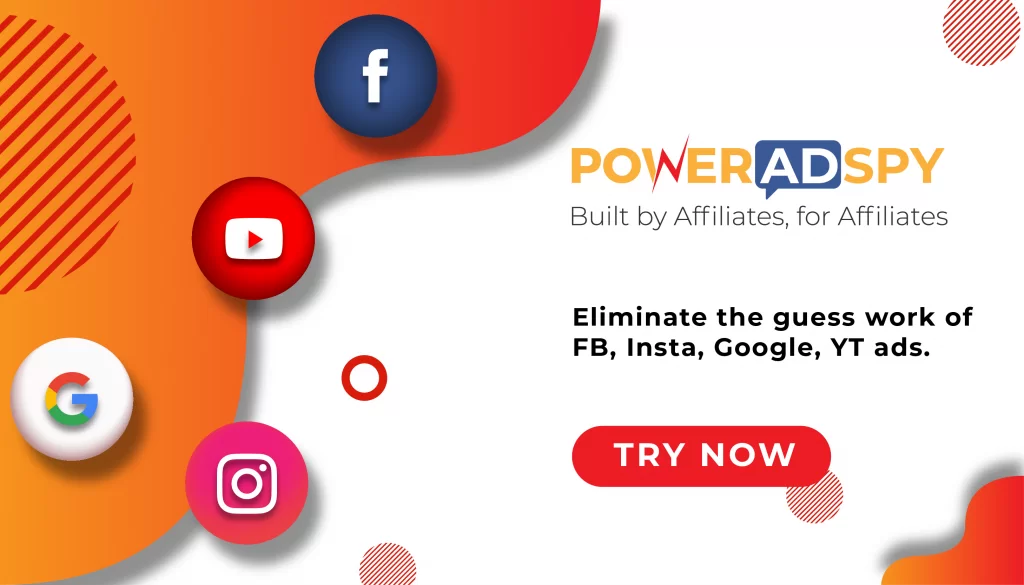How Is Virtual Reality Marketing Affecting the Consumer-Brand Interaction
It was not a very long time ago when virtual reality marketing was a new and innovative technology ready to be discovered by the top online marketers. But it is no more the future- it exists in our very present. More than 80% of people are aware of virtual reality, and this number is climbing steadily since 2015.
As the days are passing, more and more brands are introducing virtual reality marketing as a part of their campaigns. While some feature VR in their Instagram and Facebook ads, others create custom apps for it.
It doesn’t matter what method you use- VR opens up a unique and potentially less expensive way to connect with new customers and increase overall brand awareness.
Let us take a closer look at how VR marketing actually strengthens customer relationships and how some of the top brands are benefitting from it on various advertising platforms.
What Do We Understand By Virtual Reality Marketing?
Virtual reality marketing refers to various techniques and strategies that help a brand in promoting themselves using virtual and augmented reality (AR) technology. Such technology creates a fake yet realistic environment for any user.

VR can be visual or multisensory- depending on the medium that you use for marketing. While a VR headset offers an immersive experience, an Instagram filter only overlays objects on the screen of the device.
AR is the most popular kind of virtual reality marketing since it is more affordable as compared to those VR headsets. It is also more accessible to the consumers since augmented reality only requires a desktop/phone app.
Although augmented reality existed in the marketing world for quite a long, it gained a lot of attention with Snapchat. Later, companies like Sephora started catching up with their Virtual Makeup app and the game Pokemon Go with their AR Pokemons.
Bonus – Unlocking Your Audience Using The Power Of Social Media Data Analysis
Let us get into some of how brands are creatively using VR marketing strategies:
#1. The “Try Before You Buy” Psychology
On average, about 64% of e-commerce products return due to the lack of customer satisfaction. Since your buyers cannot physically try on the products, they are less likely to be satisfied when it actually arrives at their home. However, adopting augmented reality marketing lets customers try these products virtually before buying them.
This way, they get an idea of how they should expect their products, and there are fewer chances of dissatisfaction. Fewer returns would mean fewer costs and, ultimately, more revenue out of your business. There will also be less waste from the products that a company cannot resell.
Several industries have seen early success, exponential hike in ROI, and more conversion of potential leads using VR marketing. Here are some of the examples:
Lenskart: Try New Specs
An online eyewear company from India, Lenskart, introduced a virtual trial technology for their online customers. Users click their photos from various angles, upload on their site, then get to see how different styles of frames would look on their faces. The 3D trial looks quite realistic from various angles.
Although they have their showrooms in various cities, people still get the option to try specs by sitting at their homes, increasing the overall sales for Lenskart. The company got all the benefits of sending out free samples in the form of augmented reality and reduced its overall expenditure.
Various other companies also introduced such features to let their users try on accessories, for instance, CaratLane (jewelry retailer), Gucci (for sneakers), Dallas Cowboys, etc.
Do you worry about what your competitors advertise on various platforms? Use PowerAdSpy to take a sneak peek into their advertising campaigns and be prepared to come up with better ads for your next campaign!
Dulux and Asian Paint: Color Visualizer
In case you are confused about deciding the color that should go on your wall- Dulux and Asian Paint are here to the rescue. These companies provide their users with a Color visualizer app to let them choose the best color combinations for their walls.
The customers can try out different combinations virtually, decide which one looks the best, then save it. They can, then, purchase the same color in any store using the color codes. This feature especially comes in handy for marketing during COVID-19 crisis when you cannot have people over your home to decide the color for your walls.
This virtual reality marketing worked really well for Asian Paints and Dulux. As a result, a lot of companies are following their heels and launching similar apps for determining the best look for their homes. IKEA, for instance, introduced a similar app to let anyone choose multiple sets of furniture that suit their space.
Lakmé: Getting Virtual Makeover
This Indian makeup company released a virtual try it on feature for their customers to let them choose their makeup online. Lakmé launched its virtual app in 2015 and has witnessed an increase in its potential customers ever since.
Nevertheless, this app is quite an answer to the concerns regarding testing makeup without sharing the samples with other random customers at the store during this pandemic. In fact, one doesn’t even have to venture into the store to try out what they find appealing! They can even try different hair colors virtually.
You can either upload your photo or choose a model whose features resemble you the best. This way, you can choose makeup for your skin tone even if you don’t have an appropriate photo to test it.
Various other brands have also introduced such apps and features like Makeup Genius from L’Oreal, Virtual Artist from Sephora, Virtual Makeover Online by Maybelline, and many more!
#2. Creating Random Branded Content With Filters
Instagram recently had a partnership with Sparkle AR and came up with a new feature that allows users to create their own custom AR filters. It took virtual reality marketing to the next level for brands like Coca Cola, who came up with this cute polar bear mascot that accompanies a viewer, virtually, wherever they go.
When any brand introduces a custom filter, the other IG users can use the filter in their camera and upload it to their stories. These filters overlay images or words on top of the actual picture in the camera view. It is a fun way to encourage UGC (user-generated content) and spread brand awareness via VR marketing.
Prada: Current Prada Mood –
The luxury clothing brand, Prada, came up with a story filter that turned all the letters of PRADA in the form of an acronym. It was a 2020 marketing campaign.
A white sign appears behind any user who clicks on this filter, and it says, “Current Prada Mood.” This filter then runs through a set of all the acronym sets and lands on one of them at random.
People seemed to love this filter as it provided them with a game-like feeling. They did not know what set of acronyms would pop up on their screens, so it created a sense of fun and excitement. The acronyms were also pretty cool. Thus, the audience also loved to share them with their Insta stories. In the end, it was a witty VR marketing technique for spreading brand awareness.
Coffin Dance from Paulostoker –
The coffin dance recently became a viral clip, especially among the pre-teen. And since the audience on Instagram is pretty young, it was quite common among them as well. A filter popped up on every IG user’s story that let them swap their faces with the coffin dancers.
The filter was hilarious and went viral like crazy. Paulo Stoker is an artist and freelancer by profession who came up with this genius idea of creating this filter. It led the artist to grab a lot of eyeballs on his account, and he is currently heading to almost 60k Instagram followers.
This step was a masterstroke as people don’t seem to be getting over this filter that easily. Similarly, various other content creators also come up with AR filters to reach more potential audiences for their work. Nevertheless, virtual reality marketing has worked wonders for them.
BTW, Here are 11 Reasons Why Mobile Advertising is Better than Internet Advertising
Pepsi: Snapchat Swag Filter
Let us talk about the very app that first brought AR filters to the limelight- Snapchat. Brands and creators started using IG stories for marketing pretty recently- Snapchat has always been a pro at it.
The cold drink brand Pepsi recently came up with an interactive filter for the Snapchat audience. It was a choose your own journey game where the user would pick an answer for four different scenarios.
Snapchat would, then, rate their Swag based on the answer that they choose. This lens was a part of the ‘Har ghoont mein swag hai’ summer campaign for Pepsi, and it worked really well.
Similarly, various IPL (Indian Premier League) teams also collaborated with Snapchat lenses to reach their fanbase. Netflix also teamed up with Snapchat to come up with an all-new ‘Landmark’ feature using the marker tracking technology. One of their original series, Stranger Things, took very creative advantage of it.
#3. Highlighting The Real-Life Impact of Social Initiatives
Yes, you read that right. Virtual reality marketing not only helps in brand awareness and promotion but also helps people in reaching out to the general audience for a social cause.
One of the primary steps to promote social initiatives among the audience is by showing the people why this cause matters to them. About 75% of young adults tend to donate money for the issues that they recognize around them, but you have to convince them first that your cause is actually worth helping and donating.
VR actually makes people connect better because the feeling is more real and personal. The Virtual Human Interaction Lab at Stanford University, for instance, discovered that using VR while educating people about social issues increases empathy among the participants and encouraged them to change their overall behavior. You can use this technology to raise awareness of your social initiatives and fundraising for charities and non-profit organizations.
Here are two of the companies that utilized VR marketing to its best:
Toms: Experience Donating Shoes IRL
The shoe brand- Toms is known for its humanitarian efforts in making this world a better place for all. They began this initiative by donating a pair of shoes to someone needy for every set that a customer buys. As a matter of fact, the company recently decided to give away about a third of its profit to charitable organizations that promote causes like education, mental health, freedom, violence, and many more.
To make their campaign more believable, they decided to highlight their buy-one-give-one model by creating an in-store VR experience. The customers who visit there can virtually go on a donation trip from the company after wearing their VR headset.
The customers get to watch as the company representatives give shoes to little children and even meet them to see their living conditions. This campaign, as expected, received an overwhelmingly positive and emotional reaction from its customers.
Thanks to Virtual Reality marketing technologies, the customers can witness the real-life benefits of supporting this brand.
Alzheimer’s Research UK: Your Perspective
VR can also help brands promote their social causes by putting the users into someone else’s shoes. Alzheimer’s Research UK partnered with Google Cardboard to make this happen and created an app- A Walk Through Dementia for the same.
This app would let people experience how it’s like to live with dementia. The users would then go and perform every task like buying from the grocery store, walking around the house, doing the chores, walking their dogs, etc. The app would manipulate the audio and visual to make the user feel the difficulties that a dementia patient faces. They would have trouble reading and focusing on stuff and would be overwhelmed by the noise around them.
The best part is that they designed a phone app so that it could reach a broad audience. The Google cardboard assists in making it a full VR experience, and yet, it works without headsets.
By making the people feel the disease, they make the cause personal. And since people realize how difficult it is to live with dementia, they understand why they should donate to support Alzheimer’s research.
Other Google Cardboard Initiatives
The Google Cardboard brings an immersive AR experience to its users who don’t have VR headsets. A person can get a Google cardboard or fold one for themselves, then insert their smartphone in it. Various apps operate their VR videos on Google cardboard. You can experience them without having to buy a VR headset.
Many companies collaborated with Google cardboard to come up with an affordable way of virtual reality marketing. Alzheimer’s research was one such company. Here are some more of them:
McDonald’s: Happy Goggles
McDonald’s recently managed to create a Happy Meal box that folds into a VR headset. The boxes even have instructions on how to build them at home. Being really easy to use for kids, the food company paved the way for this technology to be available to the masses as a fun tool rather than a high-tech investment. It is also a great example of recycling.
Volvo: Test Drive Your Vehicle
Volvo recently created an app for making it possible for its consumers to test drive a car at home. The app is downloadable on the smartphone, even if you don’t have Google Cardboard. This brilliant VR marketing move has not only put Volvo back on the map- it is also accessible to all the people!
Also Read:
Bing Ads vs Google Ads: Where should you Invest your Money?
How Top Brands Are Leveraging Mobile Ads To Attract High-Quality Customers? How Can You Do It?
Create An All-New Brand Experience With VR Marketing
Offer unique perspectives to your customers with virtual reality marketing. Let them try on the products before they buy it, make them understand the social implications of working with your brand, and reach out to new audiences with fun filters.
AR and VR are achievable even for small businesses. Custom AR filters are free on Instagram, and various other apps have made it possible for everyone to create a custom augmented reality app for themselves.
Focus your business strategies on virtual reality marketing. While AR and VR are highly affordable and widely available all over, they are still new enough to give you an edge in the market. Now is the right time to embrace them.
Have you tried VR marketing in your campaigns? Let us know your experience in the comments below.

















